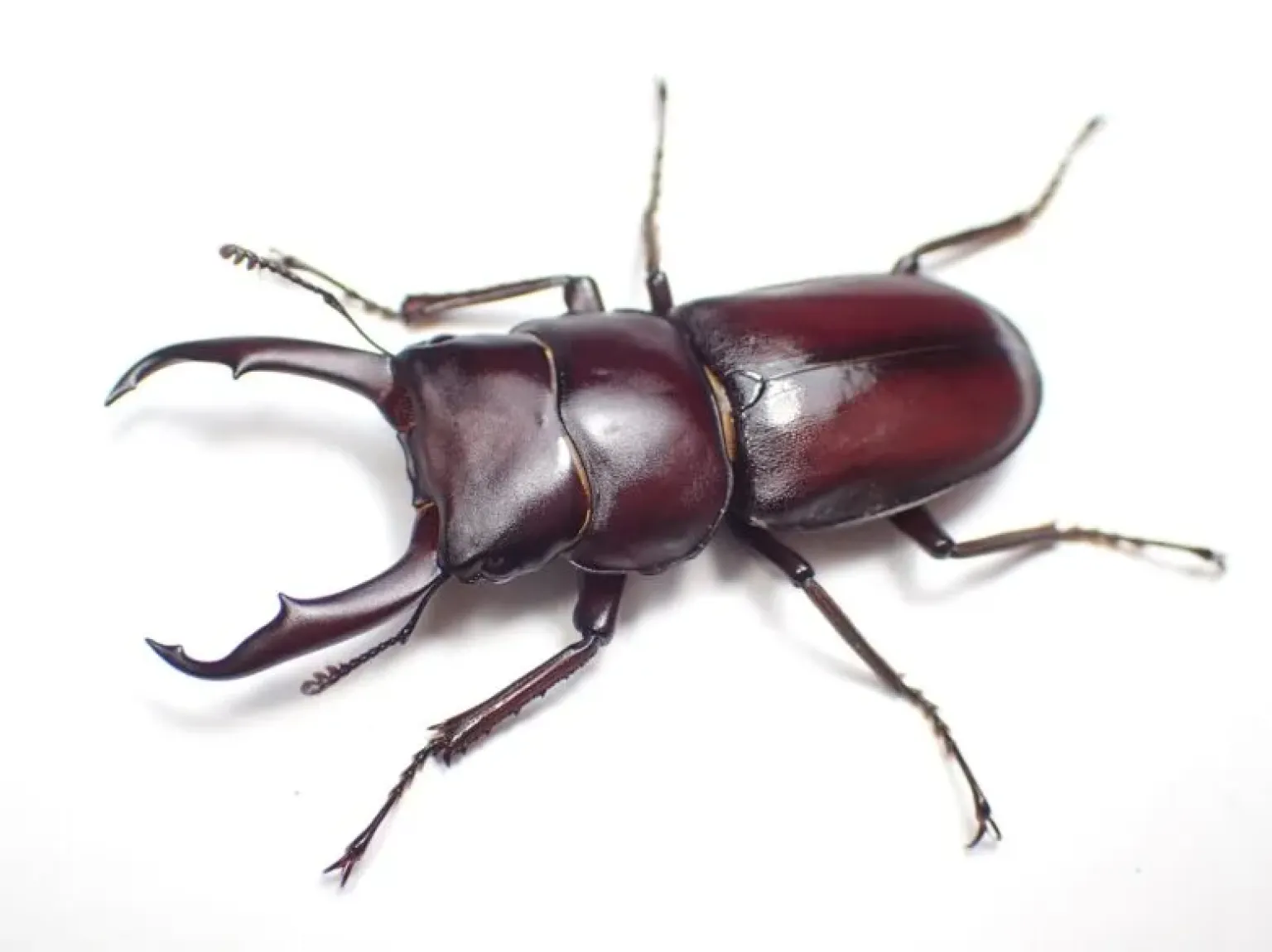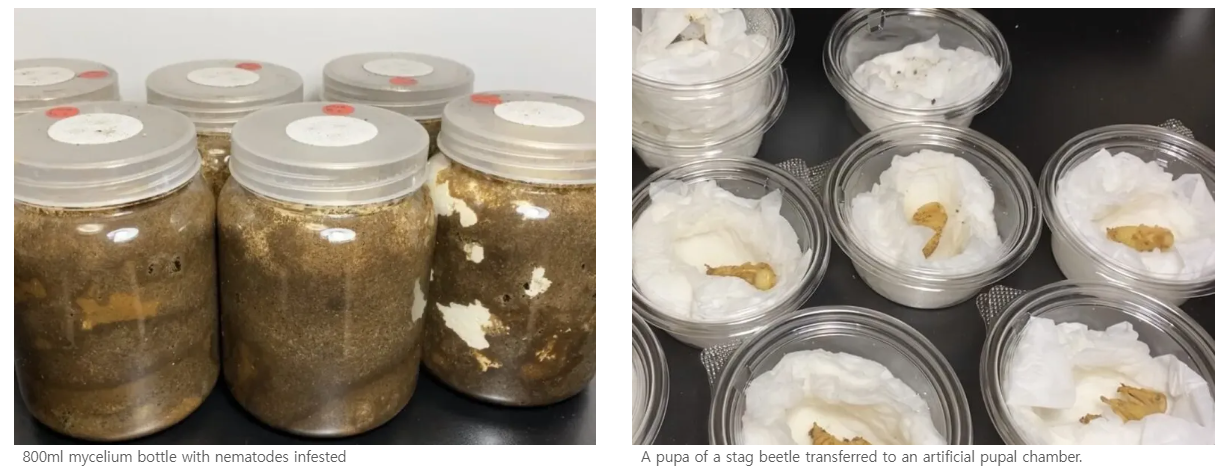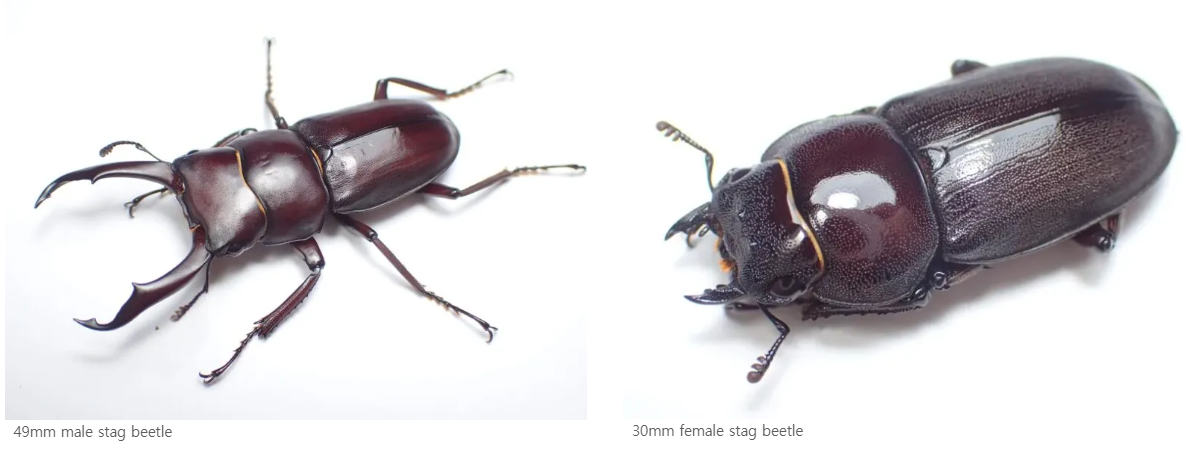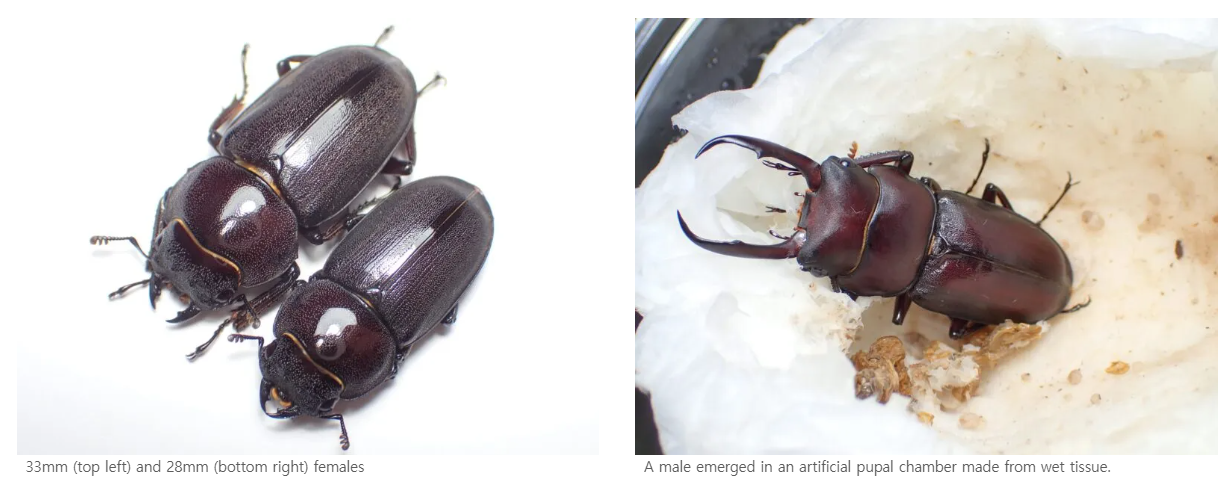
Japanese name: Hachijo kokuwagata (Hachijojima subspecies of kokuwagata)
Scientific name: Dorcus rectus miekoae (Yosida, 1991)
Distribution: Hachijojima
Wild rarity: Rare ★★★★☆☆
Size: Male 23-49mm Female 23-28mm
Rearing record: 51.2mm (2004) *As of 2021, according to BE-KUWA
Wild record: 49mm *As of 2021, according to BE-KUWA
Difficulty of raising: Normal ★★★☆☆☆☆
Rearing temperature: 10-28°C For reference, the temperature on Hachijojima
Adult lifespan: Over 1 year
Larva period: About 4-10 months?
remarks
Among the small stag beetles, the population that lives on Hachijojima is classified as a subspecies called the Hachijo small stag beetle. The Hachijo small stag beetle is characterized by a slightly shiny, reddish color, and the male's mandibles seem to be thinner than those of the mainland. Many of them are smaller in size overall, about 3 to 5 mm smaller on average than those of the mainland.
The ecology and rearing method are the same as the Japanese stag beetle in Honshu, laying eggs on soft egg-laying wood, and the larvae grow well on fermented mats or mycelium. Personally, I think mycelium makes it easier for larger larvae to hatch. Recently, the population on Hachijojima seems to be increasing.

Breeding Record
Available around May-June 2021 - Egg laying set
(I didn't keep a proper record, so I'll write what I know)
I got a wild specimen from Mine, Hachijojima. Since it was already active, I put a little fermented mat in a clear slider and rolled a single egg-laying stick into it, and put a pair together to observe what would happen. Surprisingly,
the egg-laying switch did not turn on in May, so I think they started laying eggs around June to July.
2021/9/3 Adding mycelium bottles
I separated the materials from the egg-laying set, separated the 1st and 2nd instar larvae, and put them into 800ml mycelium bottles. Because I didn't have enough mycelium bottles, I made some bottles to hold just one larva in 800ml, and some to hold two larvae in each bottle, and managed the remaining larvae in a fermentation mat in a 200ml pudding cup.
2022/4/5 Some mycelium bottles dug up
A large number of nematodes had emerged from a part of a mycelium bottle that had been left untouched for a while, so we quickly dug it out.

Some of them had already emerged as adults, but the other half were still in the pupal stage, so I made a temporary artificial pupal chamber by stuffing wet tissues into a 200ml pudding cup. Many of the insects in the fungal culture bottles that I did not dig up this time have emerged or are in the pupal stage, so I would like to check for adult insects at a later date.
Please be careful when viewing, but you can watch a video of the excavation and the creation of a temporary artificial pupal chamber here
2022/4/19 Emergence
Most of the individuals have now emerged, so I will dig up the adults and compile the data.
Add 2 800ml
♂ 49mm, 46mm, 46mm, 46mm, 45mm, 44mm, 40mm, 40mm,
♀ 31mm, 30mm, 30mm, 29mm, 29mm, 29mm, 28mm, 28mm, 28mm, 28mm, 28mm, 28mm, 28mm,
Add 800ml per fish
♂ 49mm, 49mm, 46mm,
♀ 33mm, 30mm, 30mm, 30mm,

The individuals that emerged from the mycelium bottle were 40-49mm for males and 28-33mm for females. As expected, the ones that emerged were visibly larger when put into the 800ml bottle one at a time. Among them, the female was 33mm, which seemed to be a record for a female...
Also, the individual that was collected as a pupa last time has emerged healthy. Here is
the video of the excavation .

This time the male was 2mm smaller than the record, but if I had replaced the mycelium along the way or managed it to make the mycelium last a little longer, I may have been able to grow it a little larger. For the next generation, I will start with putting one per 800ml bottle and try raising the minimum temperature in winter a little to increase activity. I kept them in a slightly cold place in winter, so I think that even though it took a long time, they didn't eat well and the mycelium deteriorated over time.
Many other individuals that were kept in 200ml pre-made bottles due to lack of mycelium have hatched, but I will not mention them here...





Leave a comment Use WYSIWYG